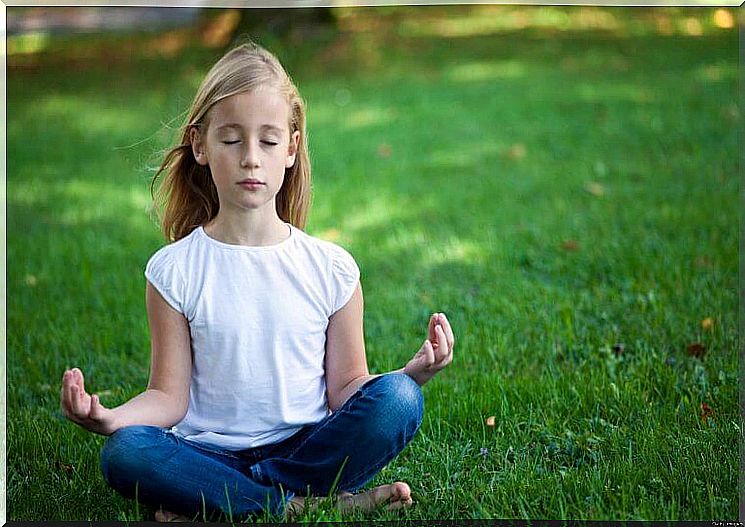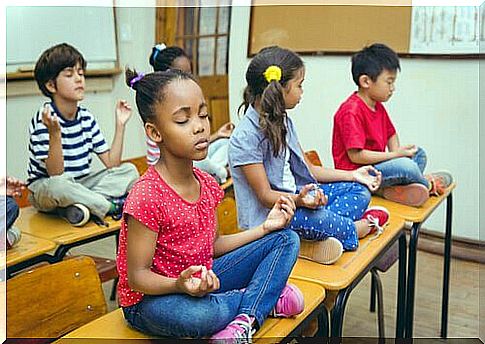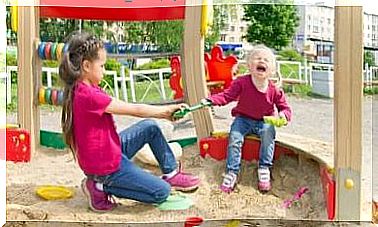The Benefits Of Classroom Meditation

Children don’t feel as burdened by as many prejudices, barriers or preconceived ideas as adults. Hence, they have an advantage when it comes to practicing meditation.
Indeed, this activity in the school environment involves many benefits for students. So in this article we are going to discover the benefits of meditation in the classroom.
First of all, we must keep in mind that meditation is both a mental and a physical exercise. Students who strive and practice mindfulness in the classroom enjoy its many short- and long-term benefits.
Meditation can play an important role as part of regular teaching. It allows students to increase their self-awareness, as well as helping to see new perspectives.
The practice of meditation only requires commitment. After all, you only need to spend 10 minutes a day and have a small space to sit or stand comfortably.
We must keep in mind that meditation is not just for adults. Children and teenagers can also enjoy its benefits. In fact, researchers have confirmed that classroom meditation helps students become more focused and calm. That is, it also offers the opportunity to learn to relax and reflect.
What are the benefits of classroom meditation?
Next, let’s tell you what the benefits of classroom meditation are:
1. Greater focus
Meditation increases the ability to concentrate for longer periods of time. Likewise, it teaches children that it is possible to direct their attention.
This benefits students in a number of ways, including the ability to pay attention in class for longer and thus improve content retention.

2. Encourages compassion and self-esteem
Children sometimes feel that they cannot pass a test due to pressures and circumstances beyond their control. This can be difficult, especially when you are scolded or mistreated by others.
Fortunately, meditation can reinforce children’s feelings of security, empathy, and inner stability. This, in turn, generates compassion, joy and greater self-esteem among students.
3. Improves psychological well-being
The third benefit of classroom meditation is that its practice improves children’s attention and reduces internalizing problems such as fear, non-integration into social groups, anxiety and depression.
In this way, it improves their psychological well-being, as confirmed by several scientific studies.
4. Reduces stress
Meditation provides children with the necessary time to rest physically, mentally and emotionally, directly affecting the entire nervous system. That’s because it reduces the production of stress-related chemicals like cortisol.
In addition, meditation lowers oxygen consumption, heart rate, respiratory rate and blood pressure.
5. Improves memory
This ability allows students to retain more information. This is essential for getting better test results and thus passing different tests.
What’s more, a good memory means a greater ability to combine different ideas and thoughts at the same time. Therefore, this is a useful skill for conducting intelligent and interesting conversations and reasoning.

6. Better control of emotions
Experts certify the relationship between emotional imbalance and negative school outcomes. Fortunately, as you may have noticed, one of the benefits of mindfulness is that it reduces stress and anxiety.
As if that weren’t enough, meditation also helps students manage their emotions better. This has a positive impact on academic results.
In short, taking time for students to mentally relax is essential to improving behavior.
Given that children and young people find themselves in stressful situations often, meditation is a way to gather and focus your thoughts.
Without a doubt, scheduling a time to stop and meditate is positive for both students and teachers. So why not give this method of relaxation a try?









